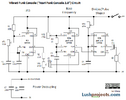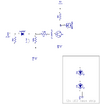MrDEB
Well-Known Member
curious if this has ever been done or even possible.
Am playing around building an Atari Punk Console but thinking of adding LEDs that are controlled by 3 band pass filters (low, mid high)
this is for another project for grandson to drive his parents nut with the sound and amuse him with the LEDs.
Am playing around building an Atari Punk Console but thinking of adding LEDs that are controlled by 3 band pass filters (low, mid high)
this is for another project for grandson to drive his parents nut with the sound and amuse him with the LEDs.



